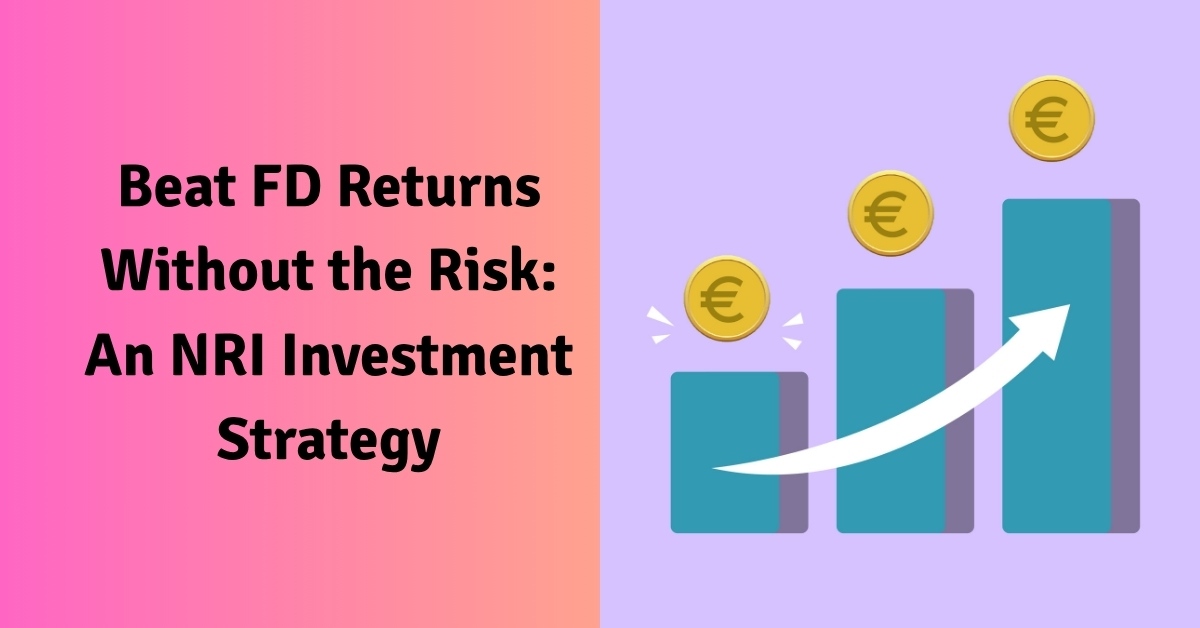Beat FD Returns Without the Risk: An NRI Investment Strategy

Are you an NRI with lots of money parked in fixed deposits? You’re not the only one. Most Non-Resident Indians prefer FDs due to their safety and tax advantages, but wonder at times: “Is it possible to get higher returns without taking substantially higher risk?” Yes, it is possible, and it’s easier than you imagine. In this blog a tested investment strategy that has performed consistently better than FD returns for the last 15 years and has had similar levels of volatility.
Understanding Asset Classes and Their Performance Cycles
Before diving into the strategy, let’s understand how different asset classes work. Financial assets can be broadly categorized into Indian equity (stock market), gold (a hedge against inflation), debt/fixed income (FDs, bonds, debt mutual funds), and foreign equity (stocks from other countries). The main observation is that these classes of assets are not necessarily positively correlated. Their returns are market cycle-sensitive – slowdowns benefit gold and cash, recessions favor bonds and fixed income vehicles, periods of recovery benefit equities, and boom times benefit everything from equities to commodities. Referring to historical figures, you’ll realize each year has a different asset class at the head of the returns table. In 2013, NASDAQ beat Indian markets; in 2014, Indian markets rose 32% whereas gold declined by 8%. This cyclic rotation happens every year, which is the reason diversification is important to achieve financial success in the long run. Fun fact: During the recession period between 2008 and 2013, Indian equity returns were nil, whereas gold returns in rupees were a whopping 21%!
The Strategy: Preserving FD Volatility with Improved Returns
Now on to the strategy that can outperform your FD returns without increasing risk. Let’s see some numbers:
- A 100% bond-FD portfolio generally returns around 7.1% with a volatility of 6.8%. But what if it were possible to have the same volatility and better returns?
- By investing 75% in debt and 25% in equity, you can get around 9.8% return with nearly the same volatility (6.9%). That’s an appreciable gain without taking extra risk!
Fun fact: Even fixed deposits are volatile – rates vary year by year, sometimes giving 7%, sometimes 6.5%. This rate variation is very much what we quantify as volatility in FDs.
The Gold Advantage: More Than Just Beefing Up Your Strategy
Mixing in gold offers even more exciting scenarios. A 80-20 portfolio between FDs and gold registers a mere 6.5% volatility, less than pure FDs! Now to the ideal blend: 55% in debt securities, 25% in stocks, and 20% in gold. This diversified portfolio has the same low volatility position but increases returns to about 11.2% – quite a bigger return than purely FD investments. It’s not only theoretical this blend has been tested to perfection over 15 years and applied to risk-shy clients who desire higher returns without added portfolio risk. Fun fact: In years such as 2011, where equity gave 12%, bonds 5%, gold 27%, and US markets 14%, this balanced portfolio gave about 13% total return – about twice the FD rate!
Long-Term Performance: Consistency is Key
The strength of this approach becomes apparent when seen after 15 years. Our suggested proportion is:
- 25% in Indian equities
- 5% in US markets (for equity diversification)
- 45% in debt/fixed income/bonds
- 25% in gold
This portfolio has returned positive returns each year, irrespective of market conditions, wars, depreciation of currency, or other extraneous factors. Yearly returns vary from 6-8% in bad years to 12-20% in good ones, with a yearly average of around 10.7% – approximately 3-4% higher than usual FD returns with similar volatility. In the 15-year period under examination, just two years (2016 and 2020) experienced slightly lower returns, but these were positive and could have been improved further through tactical allocation tweaks.
Implementation: Putting This Strategy into Practice
To put this strategy into practice effectively:
- Fix your equity allocation first, in line with prevailing valuations in the market
- Decide how much to invest in foreign equity, gold, and fixed income
- Rebalance from time to time to stick to your target allocation
For the complexity-averse, there’s some good news: you don’t have to do this actively yourself. Well-designed mutual funds can do these shifts in allocations for you and return more than an FD with risk kept low.
Conclusion: Diversification is the Key to Success
The takeaway is clear: proper diversification across asset classes can significantly enhance your returns without substantially increasing risk. This approach not only optimizes risk-adjusted returns but can also offer tax advantages compared to having 100% of your funds in FDs and bonds. For NRIs who want to maximize their investments while keeping their minds at rest, this balanced approach is the best of both worlds the security you cherish in fixed deposits combined with the higher returns usually reserved for riskier investments. Ready to put this strategy into action with your NRI investments? As a cross-border taxation and NRI financial planning specialist financial advisor for NRI, Prime Wealth can guide you through a customized investment strategy that’s suited to your unique situation and objectives. Contact us at office@primewealth.co.in or visit www.primewealth.co.in to arrange an appointment.
FAQs
- Is this investment strategy suitable for all NRIs?
Ans- It’s most suitable for risk-averse NRIs who want better-than-FD returns without significantly increasing volatility. - What is the minimum investment amount required for this strategy?
Ans- While there’s no strict minimum, a diversified portfolio typically works best with at least ₹10 lakh for proper asset allocation. - How often should I rebalance my portfolio?
Ans- Annual rebalancing is generally sufficient, though significant market movements might warrant mid-year adjustments.
ervices cater specifically to NRIs and can be managed remotely. - What are the tax implications compared to FDs?
Ans- Different asset classes have different tax treatments, potentially resulting in lower overall tax liability compared to 100% FD allocation. - Will this strategy work during periods of high inflation?
Ans- The gold component helps hedge against inflation, making this strategy relatively resilient during inflationary periods. - How do I select the right mutual funds for this strategy?
Ans- Look for balanced advantage funds or multi-asset funds with a track record of maintaining similar asset allocation patterns. - Can I modify the asset allocation based on my risk tolerance?
Ans- Yes, the percentages can be adjusted; however, significant deviations may alter the risk-return characteristics. - What happens if I need to access my money quickly?
Ans- Most of these investments offer good liquidity, though some may have exit loads if redeemed before a specified period. - How does currency depreciation affect this strategy?
Ans- The gold and foreign equity components provide some protection against rupee depreciation, making this strategy beneficial for NRIs.
Disclaimer: The information provided here is for educational and informational purposes only and should not be construed as financial, legal, or tax advice. Consult with a qualified professional before making any investment decisions. We do not accept any liability for errors or omissions in this information nor any direct, indirect, or consequential losses arising from its use.



